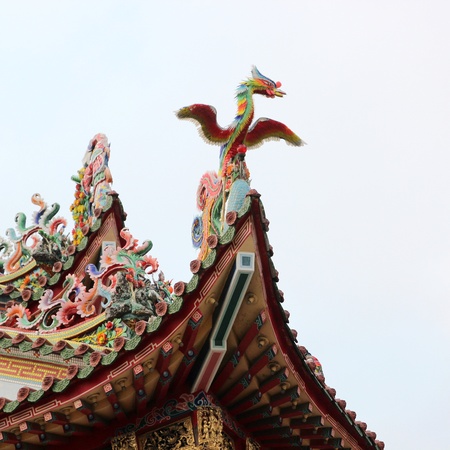Origins and Philosophical Foundations of Feng Shui
Feng Shui, at its core, is rooted in the ancient Chinese pursuit of harmony between humanity and the natural world. Emerging over four thousand years ago, its origins lie deep within the philosophical traditions of Taoism and Confucianism, where the balance of forces—Yin and Yang—and the dynamic flow of Qi (energy) became central tenets. The earliest texts, such as the “Book of Burial” from the Jin Dynasty, reveal how early practitioners observed landforms, watercourses, and celestial patterns to determine auspicious sites for dwellings and graves. These principles were not merely superstitious; they represented a sophisticated understanding of environmental psychology, cosmology, and a reverence for nature’s cycles.
Through successive dynasties—from Han to Tang to Ming—the philosophy of Feng Shui evolved in tandem with advances in astronomy, mathematics, and urban planning. What remained constant was its focus on spatial harmony: the careful arrangement of architecture and landscape to cultivate prosperity, wellbeing, and spiritual balance. This connection between human intention and environmental design is underpinned by an enduring respect for natural laws—a concept that continues to intrigue Western interpreters today. In its historical context, Feng Shui transcended decorative trends; it became a way of life, interwoven with ritual, governance, and familial legacy across imperial China.
2. Traditional Practices and Applications in Chinese Culture
Feng Shui, or 風水, has deep historical roots that intertwine with the evolution of Chinese civilisation. Its principles—centred around the harmonious balance between humans and their environment—have profoundly influenced various aspects of traditional Chinese life. From grand imperial palaces to modest family dwellings, and from burial sites to everyday routines, Feng Shui’s application has played a significant role in shaping both physical spaces and cultural values.
Feng Shui in Architecture
Historically, Feng Shui guided the placement and orientation of buildings, ensuring alignment with auspicious energy flows. Ancient architects considered the direction of sunlight, prevailing winds, and proximity to water sources. The Forbidden City in Beijing exemplifies this, meticulously constructed along a north-south axis to optimise cosmic harmony. Residential homes similarly reflected these principles, with entrances and courtyards arranged to encourage positive qi (氣) circulation.
| Architectural Element | Traditional Feng Shui Consideration |
|---|---|
| Main Entrance | Should face an auspicious direction to welcome beneficial energy |
| Court Yard Placement | Located centrally to facilitate natural light and air flow |
| Water Features | Placed to the east or southeast for prosperity and health |
| Room Layouts | Avoid direct alignment of doors and beds for better energy flow |
Beneath the Surface: Burial Traditions
The influence of Feng Shui extends beyond life into ancestral reverence through burial customs. Tombs were traditionally sited on slopes facing water with mountains behind—a configuration believed to bring peace to ancestors and good fortune to descendants. This practice is encapsulated in the adage “mountains at the back, water in front,” symbolising security and nourishment for generations.
Cultural Table: Feng Shui in Burial Practices
| Element | Symbolic Meaning | Application Example |
|---|---|---|
| Mountains (behind) | Protection & support from ancestors or spiritual forces | Tombs built on hillsides or with artificial mounds behind them |
| Water (in front) | Continuous flow of wealth & vitality for descendants | Tombs facing rivers or ponds strategically placed by families |
| Orientation (south-facing) | Abundance & brightness for future lineage | Siting graves towards the south where possible |
The Everyday Practice of Feng Shui in Daily Life
Beyond formal spaces, Feng Shui is woven into daily routines. Families arrange furniture to maximise light and minimise stagnant areas; objects such as mirrors, plants, and wind chimes are placed intentionally for energetic balance. Even today, many Chinese households consult almanacs before renovations or moving house, underscoring how these ancient traditions remain a living heritage.
Cultural Significance and Lasting Influence
The enduring presence of Feng Shui in Chinese society highlights its profound cultural significance. Not only does it shape physical environments but also fosters a collective sense of wellbeing rooted in respect for nature’s rhythms and ancestral wisdom. As we explore Western interpretations, understanding these traditional practices provides essential context for appreciating both the authenticity and adaptability of Feng Shui’s legacy.
![]()
3. Introduction of Feng Shui to the Western World
Feng Shui’s journey from its ancient Chinese origins to British shores is a story shaped by cultural curiosity, globalisation, and moments of cross-cultural exchange. The arrival of Feng Shui in Britain and across the West did not occur overnight; rather, it was seeded through scholarly texts, the rise of international travel, and the increasing appetite for holistic living philosophies in the late 20th century.
The Early Encounters
The earliest mentions of Feng Shui in Western literature can be traced to 19th-century explorers and missionaries who chronicled their observations of Chinese customs. However, these initial accounts were often coloured by misunderstanding or exoticism, framing Feng Shui as mere superstition. It wasn’t until the latter half of the 20th century that a more nuanced appreciation began to take root.
Pivotal Agents and Moments
The 1980s and 1990s marked a turning point. Influential authors such as Sarah Rossbach and Lillian Too published accessible guides demystifying Feng Shui for Western readers, while British practitioners like William Spear and Simon Brown tailored its principles to suit local tastes. These voices, alongside design magazines and lifestyle television programmes, played a crucial role in popularising Feng Shui within British homes and businesses.
British Reception and Adaptation
Britain’s own architectural heritage—marked by Victorian terraces and Georgian symmetry—provided both a canvas and a challenge for integrating Eastern spatial philosophy. Feng Shui consultants began interpreting traditional concepts through the lens of British interior design, fostering a blend where cultural authenticity met contemporary practicality.
Wider Western Context
This movement was not confined to Britain alone; across Europe and North America, Feng Shui found resonance among those seeking harmony amidst urban life. Workshops, seminars, and specialist shops sprang up in cities like London, Edinburgh, and Manchester, reflecting both a fascination with Eastern wisdom and an evolving sense of what it means to create meaningful spaces in the West.
4. Western Interpretations and Misconceptions
When Feng Shui made its way into British and Western culture, it underwent a significant transformation. Rather than being seen as a complex, centuries-old practice deeply rooted in Chinese cosmology, philosophy, and environmental awareness, it was often reimagined through a lens of commercialisation and interior design trends. This reinterpretation has led to widespread misconceptions about what Feng Shui truly represents.
Simplification into Decorative Trends
In many British homes and businesses, Feng Shui is most commonly associated with the strategic placement of objects—such as mirrors, water features, or lucky bamboo plants—to supposedly “attract good energy.” The nuanced relationship between architecture, natural surroundings, and the flow of qi is frequently lost in translation. Instead, guidelines are reduced to checklists and quick-fix solutions marketed by retailers or lifestyle magazines.
Common Misconceptions: A Comparative Overview
| Traditional Chinese Understanding | Western/British Interpretation |
|---|---|
| Holistic system intertwining environment, architecture, philosophy, and time cycles | Interior styling tool for positive vibes or luck |
| Requires expert knowledge and personalised analysis (Bazi, compass readings) | DIY guides, online quizzes, and generic tipsheets |
| Embedded in cultural rituals, ancestry reverence, and urban planning | Commercial products (crystals, wind chimes) sold for aesthetic or novelty value |
| Evolving discipline adapting to geography and history | Treated as a static set of rules irrespective of context |
The Rise of Commercial Feng Shui Products
The British high street now features shops selling “Feng Shui” cures—from coins to fountains—often without regard for their original significance. This commodification strips away the philosophical depth that underpins traditional practice. The focus shifts from spatial harmony between people and place to acquiring objects presumed to guarantee prosperity or happiness.
The Impact on Cultural Understanding
This Western reinterpretation can inadvertently perpetuate stereotypes about Asian traditions as mystical or exotic. While some British enthusiasts seek deeper knowledge and professional guidance, the mainstream approach tends toward surface-level adoption. The result is an experience of Feng Shui that is visually appealing but disconnected from its historical roots and intended function as an integrative art form.
5. Bridging Cultures: Integrating Feng Shui into Contemporary British Spaces
Within the evolving landscape of British interior design, Feng Shui’s ancient principles find fresh resonance. Rather than a wholesale adoption of Eastern philosophies, modern British designers and homeowners display a keen selectivity—embracing those elements that harmonise with local aesthetics and lifestyle priorities.
Selective Adoption of Feng Shui Principles
British interpretations often centre on the foundational goals of Feng Shui: balance, flow, and wellbeing. Yet, instead of rigidly applying all traditional rules, designers might focus on spatial arrangement for optimal light or airiness—mirroring the Feng Shui concept of energy flow (qi)—while forgoing symbolic objects that feel culturally distant. For example, the orientation of entryways or placement of mirrors is considered not just for mystical alignment but to enhance comfort and movement within Victorian terraces or contemporary flats.
Blending Aesthetics: East Meets West
The British approach frequently involves blending classic motifs with subtle Feng Shui cues. Neutral palettes and natural materials—cherished in both traditions—create spaces that feel grounded yet open. The inclusion of greenery echoes both the British love of gardens and the Feng Shui emphasis on vitality. Rather than ornate Chinese artefacts, designers may opt for understated accessories that evoke calm and clarity without overwhelming the character of a Georgian or Edwardian home.
Cultural Sensibilities in Practice
This thoughtful integration respects local sensibilities while acknowledging global influences. Practicality remains paramount: furniture layouts may draw on Feng Shui’s principles for social harmony, but always within the context of British customs such as afternoon tea gatherings or family Sunday roasts. Ultimately, this cross-cultural dialogue results in interiors that are uniquely British yet quietly enriched by centuries-old wisdom—a testament to design’s ability to bridge history and modernity across continents.
6. Contemporary Debates and Cross-Cultural Dialogue
In the heart of multicultural Britain, Feng Shui is no longer just an Eastern tradition—it has become a focal point for lively debate and genuine cross-cultural engagement. As more British designers, architects, and homeowners embrace Feng Shui principles, questions surrounding authenticity and cultural appropriation naturally surface. Some Eastern practitioners express concern that Western interpretations risk diluting the philosophical depth and historical significance of Feng Shui, reducing it to mere decorative guidance or a checklist for spatial arrangement.
Yet, this dynamic landscape has also given rise to powerful collaborations. Increasingly, British Feng Shui consultants are seeking mentorship from Chinese masters, while Chinese practitioners are engaging in dialogue with Western counterparts to explore new interpretations that respect tradition but adapt to local context. These interactions foster a richer understanding of how ancient wisdom can be meaningfully integrated into the fabric of modern British life without losing its essence.
Authenticity in Practice
The question of what constitutes “authentic” Feng Shui is hotly contested. For some, authenticity lies in strict adherence to classical texts and traditional compass methods; for others, it is about honouring the underlying philosophy—harmony between people and their environment—while allowing for adaptation to contemporary lifestyles and architecture found across the UK. This ongoing debate invites both caution and creativity within design circles.
Cultural Appropriation or Cultural Appreciation?
With the growing popularity of Feng Shui in Britain, concerns about cultural appropriation have become more pronounced. Critics argue that stripping Feng Shui of its spiritual roots risks commodifying an ancient practice for aesthetic gain. However, proponents believe that respectful adaptation and education can transform appropriation into appreciation—particularly when practitioners take time to understand the cultural and historical origins of the art.
The Evolving Role of Feng Shui in Britain
As Britain becomes ever more diverse, Feng Shui’s evolving role reflects broader trends towards inclusivity and global exchange. From urban flats in London to country homes in Surrey, British spaces are increasingly being shaped by both Eastern philosophies and Western design sensibilities. Through ongoing dialogue, critique, and collaboration, practitioners on both sides of the cultural divide are redefining what it means to create harmonious environments—inviting all who dwell within them to reflect on place, identity, and the spirit of home.


